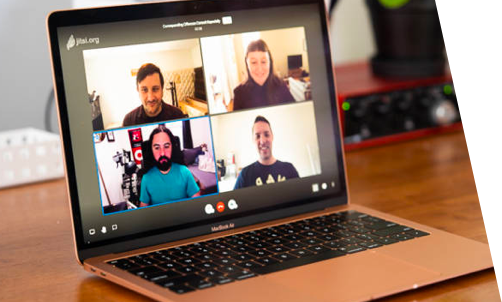
As essential as having a well-structured presentation with a clear message is, it is also vital to remember that delivering an engaging, informative, and memorable presentation is about much more than your content alone. Body language is central to a presentation’s success and can make the difference between a dynamic delivery and a dull one. In fact, studies have shown that only 7% of what we say comes from the words themselves, with 93% being communicated through visuals and tone of voice.
Body language can be divided into four different categories:
- Eye contact
- Hand movement
- Posture and movement and
- Voice
Let’s take a look at how to improve all of these aspects so that you can win over your audience when you’re next tasked with delivering a presentation.
Eye Contact
In everyday life, face-to-face interactions involve eye contact, for the simple reason that it helps people to connect. When presenting, this is no different. Therefore, be sure to only carry notes with you to stop your gaze from travelling downwards. Your eye contact should be balanced between your audience, the laptop, and the flipchart. Eyes also convey how we are feeling, so if you lose your train of thought, your audience will likely be able to tell through your eye movements. The only way to overcome this is through practice.
Hand Movements
Gestures are equally as telling, so be sure to use hand movement when presenting, otherwise you can look rigid and uncomfortable. Always start with your hands positioned between your hips and shoulders, and try to let them flow naturally while you deliver, as you would with everyday speech. You can also use your hands to make gestures to better explain the concepts you’re discussing.
Posture and Movement
Good posture is critical as it displays confidence. Never turn your back on the audience and present with your chest up and open, which helps engage your audience while easing your breathing. While delivering, you should also move around the area at the front of the room. This is your stage, so utilise the space to keep your audience connected, yet be careful not to pace unnecessarily. You can plan your movements before presenting to get the balance right and to check you can move between your laptop, flipchart, and projector while maintaining eye contact.
Voice
When talking about voice, we mean the pitch, tone, and pace at which you are speaking, as well as the use of unnecessary umms and errs within your speech. Generally, your voice when presenting will need to be louder so that you can be heard, and you should talk at a slower pace so that your delivery is easy for the audience to follow. Tone and emphasised pauses can also be used extremely effectively in accentuating words or specific points that are vital for understanding.

